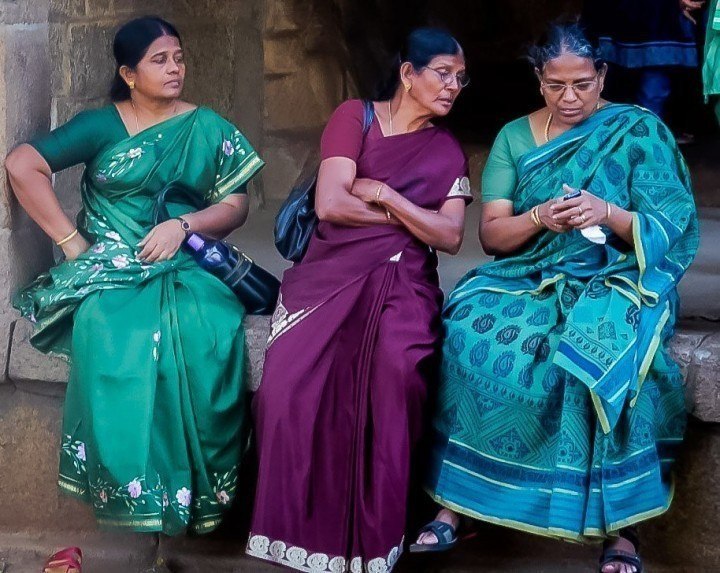
Who will be the WeChat of India? And what will it do to Flipkart and Snapdeal?
By Meghna Rao for TechinAsia,
The trend of buying things through chat has taken off in such a big way in China that some wonder if it’s a sign that chat commerce will pose a threat to conventional ecommerce around the world.
The prime example of this trend is WeChat, China’s most popular messaging app that just turned five years old. Some of our writers have spent entire days using nothing but the chat app – and have all lived to tell the tale.

And yet, when WeChat launched in India a few years ago, it failed miserably. Smartphone penetration was shallow and internet access was limited. Few in India had access to online payments, so the chat app had no realm to expand its services. Most importantly, its entrance came with the strange feeling that WeChat just didn’t understand the notoriously enigmatic country.
Can WhatsApp change its spots?
As of January 2016, 12 percent of India’s 136 million active social media users were using WhatsApp. That’s not a big percentage, but it makes it the most used messaging platform in the country. For many, WhatsApp is the first – and sometimes final – point of interaction with the internet. Facebook messenger captured 11 percent of the market, while WeChat only took up six percent.

Photo credit: Stefano60.
Still, naysayers have come up with plenty of reasons why WhatsApp won’t be able to transition into the next huge chat commerce app. It hasn’t shown any inclination to want to tie up with mobile wallets and many believe that an app where they talk to their friends should be different than one where they chat with businesses.
WhatsApp suffers from something I call “mission stagnation”: because it focused so much on creating a social chat network, it may have missed the small sliver of an opportunity that it had to change consumer behavior, turn itself into a commerce app, and become heavily monetizable. It will be tough for the social chat app to change its identity – even if it wants to at some point.
“It’s true, WhatsApp groups have popped up for people to talk to their local kirana [a small neighborhood shop] stores. In my opinion, this just shows that there’s a need for better communication between customers and merchants,” explains Varun Bhalla from Khosla Impact. Khosla Impact considers itself a “social investor”, meaning that it puts money in startups that gainfully impact the lives of the economically disadvantaged in India. It participated in chat app Lookup’s latest round of funding. “These groups are limited to those that they’ve shared their phone numbers with. The level of privacy that comes with personal chat apps is not easily translatable to commerce chat.”
Other apps rush in, but can they scale?
It’s the absence of a WeChat-like ‘chat commerce’ platform in India that’s left a space for apps like Lookup to fill. “For us [Khosla Impact], the investing thesis for Lookup was that there was no platform that directly connected consumers to their merchants,” says Varun. “We really see chat as empowering the merchant.” With Lookup, merchants have the power to send offers directly to their consumers. “They can think along advertising lines. A merchant can say to himself: ‘Hey, there’s a 4 kilometer radius where I want these consumers to know that I have this product in stock, let me send them a message.’”

Photo credit: Wikipedia Commons.
It’s not that the world of independent chat apps is perfect, either. Mobile users in India are notorious for their aversion for downloading apps and, because those outside of the elite tend to use low-cost smartphones, many don’t even have enough room for more than just the essentials.
So, with its stronghold over customers and their storage space, why isn’t WhatsApp launching a similar strategy to capture sellers in India? Because it’s really, really difficult, explains Mayank Bidawatanka, co-founder of chat commerce app Goodbox. “Our biggest challenge has been getting businesses on board,” Mayank says. Goodbox is similar to Lookup, except customers can pay through the app itself using bank accounts and credit cards. “A lot of them have to go through these processes with the payment side and the banking side, and the ‘know your customer’ applications are tough.”
Bots, APIs, and who knows what else

Photo credit: Logan Ingalls.
There are still other solutions aside from powerful WeChat-esque apps and independent commerce chat companies.
Bots are another contender in the space. Essentially agents that are hidden within an app, they can summon other programs or users with simple keywords. They can act entirely human, and are much cheaper and more efficient to create than large-scale integrations between ecommerce and chat apps. This opens up a whole new world of possibilities – think WhatsApp integrating with a Paytm bot that allows buyers chatting with merchants to use a keyword to access a widget to the payment wallet.
Still, in India, bot culture is difficult for large-scale adoption. What some call “patient zeroes” – people who know commands of bots and can be the first to use them as lingo in conversations – are hard to find in India’s winding social networks.
Other strategies include what WeChat has done by opening up its API. Developers are allowed to build their apps within the WeChat platform – but only on the chat app’s terms.

Photo credit: vgrigas
The major competitor to chat commerce remains conventional ecommerce sites, with Snapdeal projecting 100,000 independent merchants on its platform in the next two years. Flipkart added a messaging aspect to its site in August, although it’s limited to sharing shopping lists with friends and nobody really seems to use it.
One can’t help but wonder: will merchant stores in India see success by selling independently via chat? Or, will they see more success selling on monitored platforms like Snapdeal? And, even furthermore, will the two co-exist, with the latter focusing on larger ticket sizes and greater distances?
While this is merely the tip of the iceberg for chat and commerce in India, there remains yet another angle. Maybe India’s next internet users will see innovations beyond chat, with these steeped in the same unpredictability that chat commerce had when it emerged a few years ago. “The game is definitely very interesting in India,” says Varun. “It’ll be exciting to see what happens.”
The article first appeared in techinasia.com





